Do you want to become an elementary education teacher but are unsure of the process? Are you interested in teaching but don’t know where to begin? Many teacher candidates feel the same. Passage Preparation™ breaks down the process with the help of educator Daniel Bowman.
What Does an Elementary Education Teacher Do?
Elementary teachers provide instruction to young children in subjects such as reading, math, social studies, and science. The U.S. Bureau of Labor Statistics Occupational Handbook states that public schools employ the greatest percentage of elementary teachers, at 85%. Private schools employ 13% of the country’s elementary teachers.
Elementary teachers also collaborate with other teachers and specialists to plan and provide instruction. They typically develop lesson plans based on state standards or, in the case of private schools, a planned curriculum. Each state can develop their own content standards. The National Center for Education Statistics periodically releases a report which maps and compares state content-area standards.
Other responsibilities for elementary teachers include:
- Parent-teacher conferences
- Participating in professional development
- Serving in leadership roles such as grade-level chair
- Work with students individually to address specific learning needs
- Facilitate and support age-appropriate behavior
Why Become an Elementary Teacher?
Elementary education teachers enjoy versatile careers and multiple opportunities to collaborate with colleagues within their schools and districts or divisions. Elementary teachers are also highly in demand. The United States Department of Education listed 30 states with shortages in Elementary Education between 2022-2023. According to the U.S. Bureau of Labor Statistics, the mean salary for Elementary teachers in 2022 was $68,030. Average salaries vary by state, though. The U.S. Bureau of Labor Statistics lists a range of $34,800 – $90,470 for Elementary teachers.
Elementary teachers also enjoy versatile career paths. In most states, the elementary grades range from Kindergarten to fifth or sixth grade. Elementary teachers are often able to teach at any grade level within this span, and may teach 1st grade one year and 5th grade the next! After gaining experience in the classroom, some elementary teachers go on to specialize in specific areas. These teachers may become Reading Specialists or Instuctional Technology Specialists.
A Practicing Elementary Teacher Shares His Perspective
Daniel Bowman is an elementary teacher in Virginia. He currenty teaches fifth grade, but has also taught in third and second grades. Here is what he has to say about being an elementary teacher.
How to Become an Elementary Education Teacher
All states require public elementary teachers to earn certification or licensure. However, pathways to earning certification may vary by state. For instance, in Texas, teachers may earn certification through a university or college-based preparation program. Or, for those who already hold a bachelor’s degree and wish to teach, approved alternative route to certification programs provide the required coursework to earn a license in the state.
Your preparation program will share other program-specific requirements which may include:
- School-based experiences including practica and student teaching or internship experience
- Completion of a portfolio highlighting your performance on key program-based assessments
- Multiple observations by program faculty and mentors during your student teaching experience
Certification Tests for Elementary Education
Almost all states require teacher candidates to pass certification tests as part of the licensure process. Many states use Praxis® or NES® exams. Other states, such as Florida and Texas, have developed their own tests. Some states require multiple tests for elementary teacher candidates. These typically include content-area exams as well as pedagogy exams.
Many teacher candidates find certification tests to be a challenging part of the licensure process. However, high-quality test preparation such as Passage Preparation™ is a helpful way to feel confident and be succesful. Passage Preparation™ offers courses aligned to Elementary Education tests used across the country:
- Praxis® Elementary Education (5006): Reading and Language Arts & Social Studies (5007)
- Praxis® Elementary Education (5006): Mathematics & Science (5008)
- Praxis® Elementary Education: Bundle (5901) – Mathematics (5903)
- Praxis® Elementary Education Bundle (5901) – Social Studies (5904)
- Praxis® Elementary Education Bundle (5901) – Science (5905)
- Praxis® Elementary Education: Reading and Language Arts (5002)
- Praxis® Elementary Education Multiple Subjects (5001): Mathematics (5003)
- Praxis® Elementary Education Multiple Subjects (5001): Social Studies (5004)
- Praxis® Elementary Education Multiple Subjects (5001): Science (5005)
- NES™ Elementary Education Subtest I (102)
- NES™ Elementary Education Subtest II (103)
- NES™ Assessment of Professional Knowledge: Elementary (051)
- TExES™ EC-6 English Language Arts and Reading (901)
- TExES™ EC-6 Mathematics (902)
- TExES™ EC-6 Social Studies (903)
- TExES™ EC-6 Science (904)
- TExES™ EC-6 Fine Arts, Health, and Physical Education (905)
After Passing Certification Tests
Certification also involves an application process, which typically includes a fee and evidence of preparation, such as transcripts. Additionally, most state departments require teacher candidates to report their certification test scores. TEACH.org is a good place to find requirements by state. State department of education websites also typically list the requirements.
Once certified, it’s time to look for a teaching position! SchoolSpring is a good resource for teaching jobs, as well as state and district or division websites. Candidates in alternate routes to certification may already hold teaching positions on a provisional license. These candidates typically maintain their current positions after earning certification.









